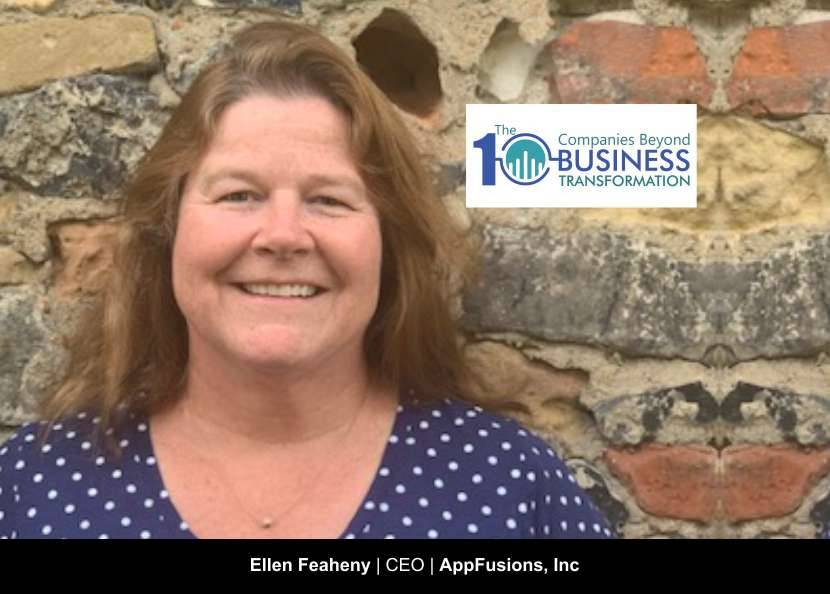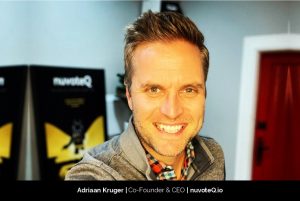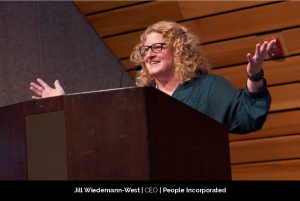Leapfrog Your Digital Transformation. Now.
The 10 Companies Beyond Business Transformation

Digital Transformation. Oh, those nebulous two words that “clouds” about every CIO’s agenda in 2018, 2019, 2020, 20XX (pun intended). Two words that mean everything and nothing, at the same time.
Despite the frustrating lack of clarity around what “digital transformation” really means, strategically, most CIOs know that they need to embrace cloud technologies in their forward strategic plans. Cloud technologies, however, are just a piece area of a whole for sorting all there is to a comprehensive “digital transformation” strategy. There is so much more.
These days, CIOs need to be considering aspects of many inter-related technologies to support both current times and evolving their IT into the future. These days, such an agenda includes a much more robust list of requirements.

Technically, CIOs need to think about all of the following areas:

- Integration strategies from the past need to morph and evolve more holistically and cost-effectively.
- Extensibility to both old and new systems is no longer optional, whether on-premise or cloud-based.
- Shadow IT can no longer be ignored, but a free-for-all-shadow IT strategy may not be right either.
- Cull value from an organizations’ accumulated data sets that may not already being exercised for greater insights and knowledge.
- Add in artificial intelligence, machine learning, evolved data science analysis and business intelligence to streamline internal processes, knowledge learning, or competitive advantages.
- Mobile, or any-device support, is a requirement now – not a sometimes advantage.
- Provide a collaboration and knowledge growth platform across the enterprise, that doesn’t suck.
- Provide a way for self-creation of unlimited digital experiences (Web apps) for internal, external or hybrid users, use cases, or objectives.
- Retain choice and flexibility with regards to cloud deployment strategies. CIOs and IT professionals have learned that spreading their asset deployments, support, and development across many data centers – or at least the choice to later – has many advantages.
- Adopt a distributed ledger enterprise security strategy to ensure no sensitive data will ever be shared, no matter if you’ll be hacked or not. Modern security models permeate foundational strategic paths across the board in IT.
The Risk, and Opportunity
The risk to make right decisions in all these cited areas, and more, is high. Collectively and taken together – intra- and inter-dependent decisions about IT architecture, support, security, and deployments for progressive evolutions has never been more critical to the long-term longevity and competitiveness of a company. The investment is enormous, but the cost of mistakes is higher. For a CIO, the risk of potential loss can be debilitating and stifling in moving forward progress. They, and/or their team, can remain in a “design phase” or a “paralysis of analysis” state, for months and even years.

Or worse, they can get a year down the chute of “building their own” and realize too late that a core wrong design turn in their development, as they “learn on the job” with new technologies across the board. The “devil is in the details” they learn. Hard lessons. CIOs and their IT departments must make cogent smart moves, and seek out key experience for speed, confidence, and success-only.
Enter AppFusions
AppFusions is a company that has been working for years to address complex inter-system IT challenges, with a customer-focused strategy – a strategy that:
- acknowledges that legacy systems and architectures cannot just be ripped out on a whim, and
- embraces newer technologies and models required to allow corporate IT departments to move ahead.
Since 2010, AppFusions has believed that there has to be a way, that is faster and easier, forward. AppFusions has been steadfast that with a holistic strategic design and plan that leverages:
- cross-system building block technologies,
- patterned designs, UX models and tooling, and,
- backend architecture requirements around directory management and security,
doing better in IT, despite complicated challenges, is possible.
The Early Days
To get started, AppFusions built packaged integration apps. These solutions are full-function end-to-end “apps” between two systems, like Atlassian, Salesforce, ServiceNow, Google, Box, Dropbox, Zendesk or others, while bringing together common workflows, clean UX and secure authentication, easily. The integrations are easy to deploy, trial, and buy – without lengthy, costly, and sometimes painful professional services as well.
Internally, we believed the solutions had to be true solutions with tricky product management workflow business logic, UX design and authentication problems already sorted. The goal was that customers could just come to the AppFusions’ website, download an integration app, install it, and “Voila! It works!”.
9 years later, AppFusions still supports and sustains dozens of ready-to-run integration apps for systems integrating with Atlassian systems for dozens of companies that renew yearly. More importantly, the AppFusions’ team learned that the business model of repeatable enterprise integration apps, tuned via customer interactions, worked.
AppSpokes – a Scalable Integration Framework for Web apps
In early 2015, AppFusions decided it was time to take the vision up a level: to build an integrated services framework for cloud Web apps.
By augmenting their original IP from server-run-Java apps to micro-services apps, AppFusions developed a farm of deep integration app “services” that encompassed the same key tenants: simple, packaged, and “just works”.
Effectively, AppFusions’ original IP was dusted off, polished, upgraded for cloud Web apps that provide streamlined 24×7 runtime support, continuous integration product development, and optimized performance and scalability. Their integration apps framework for unlimited integration apps is called AppSpokes and is currently running in sites as large as 120K+ end-users.

The Digital Revolution with Cloud Services
By mid-2017, AppFusions arrived at new cross-roads given fast changing market dynamics. But first – for some context, a bit of history.
The digital revolution is marked by the entry of cloud services. Customers for years (since 2009) may have idly followed the progress of cloud technologies and beyond, but back then and for some years after, it was easy for customers to also lay low, with “cloud doesn’t affect us”. This allowed customers to keep their tech environments at a status-quo level vs. accepting and taking on the additional expense of change.
At the same time, like a snake, shadow IT (defined as purpose-build software-as-a-service solutions easily subscribed to by departments and bypassing IT procurement processes) was becoming a force to be reckoned with.
Initially, some CIOs fought back on shadow IT rogue service entries into their companies; but as time played out, they wanted integrations between these cloud systems and their legacy systems. At that point, things got tricky: Integration posed a new problem where the incumbent vendors did not make integration easy (understatement). And without integration, internal users were a loud voice of challenge to most any CIO.
The incumbent vendors may have enjoyed this period (say 2009 – 2016ish), as customers would continue to pay their renewal fees regardless, year after year, and the vendors didn’t have to put too much energy or investment into product and feature development. Vendors’ could “milk the fat cow” for a while longer. But around 2017/2018, it seemed as though customers were finally getting impatient (or disgruntled) with incumbent platform vendors’ lack of product expansion and innovation.
Customers began searching for ways to “evolve” from long-time backbone systems that were not extensible or flexible enough to meet their modern needs. Customers, logically, needed modern tools, to work faster, easier, and for better competitive advantage.
Turning Points
Meanwhile, whereas AppFusions’ AppSpokes is/was great and proven to be a secure and scalable foundational integration framework – it was not enough. The market beckoned more.

The incumbent digital experiences and digital workplaces market was in a state of “stuck” – the vendors knew that they finally had to address the customers’ needs for innovation that had steadfastly been put off. They also knew that modernizing their platforms was not going to be easy.
Incumbent vendors needed to effectively morph their monolithic architectures to more modern, flexible, extensible platform, like what a multi-tenant micro-services architecture provides if done well. They also needed to do this in such a way to still hold onto their existing customer base, to migrate customers, somehow.
This is not an easy challenge, they learned.
A “Carpe Diem” Market Opportunity
AppFusions saw this market opportunity given their long-time integration experiences with digital experiences and digital workplaces. They knew they were in a unique position. It was a carpe diem market opportunity, since, AppFusions is one of the few vendors that had vast cross-platform domain and product experience at the key integration layers of many platforms. To do this right, productized integrations was core. AppFusions had a headstart: AppSpokes.

The incumbent digital experiences and digital workplaces market was in a state of “stuck” – the vendors knew that they finally had to address the customers’ needs for innovation that had steadfastly been put off. They also knew that modernizing their platforms was not going to be easy.
Incumbent vendors needed to effectively morph their monolithic architectures to more modern, flexible, extensible platform, like what a multi-tenant micro-services architecture provides if done well. They also needed to do this in such a way to still hold onto their existing customer base, to migrate customers, somehow.
This is not an easy challenge, they learned.
A “Carpe Diem” Market Opportunity
AppFusions saw this market opportunity given their long-time integration experiences with digital experiences and digital workplaces. They knew they were in a unique position. It was a carpe diem market opportunity, since, AppFusions is one of the few vendors that had vast cross-platform domain and product experience at the key integration layers of many platforms. To do this right, productized integrations was core. AppFusions had a headstart: AppSpokes.
AppFusions decided “it was time” to finally build a modern digital transformation platform themselves. They would build a strategic “nexus” that embraces the digital experiences, digital workplaces, and integration demand that they understood all too well. They would also embrace old and new in their extensibility support architecture.
As Ellen Feaheny, CEO of AppFusions, recalls
“I remember that day in 2017 like yesterday: the team was super excited about the new project to build “the platform” we always lamented about, and I didn't want to spoil the thinking momentum. Privately, I knew this would be one of our trickiest endeavors to date. While I had much confidence in the team’s ability – I knew it would be tricky, tricky tricky.”

AlohaCloud Is Alive and Well!
AppFusions has built AlohaCloud, a fully integrated digital experiences, digital workplaces, and integration framework platform for contemporary organizations that need a lot more than what the legacy platforms offer. AlohaCloud includes customizable and contextually integrated experiences, best-in-class extensibility, intelligence, and security. AlohaCloud is a modern “super-app” for digital workplaces and experiences built for the modern enterprise – the enterprise that is “modernizing”.
AlohaCloud is a “deploy anywhere” platform for any-cloud: public, private, or hybrid. It includes dozens of integrations, an experiences UX builder with embedded building-blocks, real-time data ingestion, engagement metrics, messaging, streams, AI/machine-learning, BI, highly performant searchable blockchain encryption and more.
AlohaCloud is an umbrella platform, bringing together the old and the new – the old systems and new technologies, architectures, capabilities, and potential. AlohaCloud does not come in to a company to instantly replace existing systems (or maybe never replacing), because AppFusions knows that is not realistic. They know that customers want freedom from lock-in, and the advantages of choice, extensibility, and flexibility. AlohaCloud embraces choice, and the “Multicloud DX integration Stack” as poignantly coined by Dion Hinchcliffe of Constellation Research (see diagram on next page).
22 months later: no regrets!
AppFusions are now in the process of signing customers who understand the value of working in a modern integrated data and content driven digital experiences and workplace platform. No politics, no blank sheets of design paper, baseline tricky technical challenges already overcome. AlohaCloud incorporates modern digital transformation best-practices “packaged” – as a significant baseline to grow from.

Deploying AlohaCloud effectively leap-frogs an organizations’ digital transformation strategy, allowing a CIO or IT organization to be down the road 2+ years on deployment day 1 (in weeks, not months or years). With proven working technology that ties seamlessly into a customer’s existing stack, yet also establishes best practices for fast continual development and evolution beyond, risk has been reduced from extreme to “just works” already.
Say Aloha! to jumpstart your Digital Transformation journey. Contact AppFusions at info@appfusions.com.




















